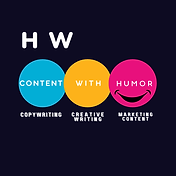12 Essential Copywriting Tips To Help Improve Your Content
- iw2write@gmail.com
- Nov 27, 2018
- 3 min read
There is a lot to copywriting. This is not content writing, which can be anything from blogs to press releases, PPT presentations, Ebooks, etc. I'm talking about good ol' copywriting, the one or two line type: headline, tagline, slogan, and the few lines in between. And yes, it still does exist today, online and offline. It's always good to have a professional copywriter in your company, but in case you don't have one, or in dire emergencies, there are a few basic tips that can help you out:
1. Make it relevant
In today's ultra fast-paced world, it's not just good but critical to be "in-the-know" when it comes to politics, culture, media, sports, etc. This helps create a topical headline that could grab attention, which is, after all, what you need.
2. Make it direct & to the point
You don't have time to beat around the bush. Unless, of course, you're making a Super Bowl commercial, that gives you a
3. It's all about them
Remember, it's not about how good your product or service is - it's how it helps the customer solve a problem. What problem does your product solve for them?This is where the copywriting creativity factor goes up a notch: presenting the solution to their problem.
4. If at first it looks good - try, try again.
Like with most other forms of writing, when you write copy, whether it's headlines, slogans or tagline, it can look like that "eureka moment" when you first type it, but a few hours later, it loses some of its sheen. That's why it's imperative not only to write more than one or two,
5. Make it funny.
Humor nearly always works. Whether it's print ads, television commercials - yes, they're not dead, and thanks to the Internet, they can be instantly shared, giving its content more power and effect. And whether it's ten seconds or thirty seconds long,
6. Make them want more
The trick in good copywriting is not just having the 3 C's (creative, clever, catchy) but making the reader want to know more. Even if he doesn't buy in the end, that information will be "stored" in his brain, if you will. At some point it might surface in a conversation with friends, clients or family.
7. Good copy goes with a good visual
Striking visuals have nearly always been a part of great ad campaigns and ads, Although it was published over 30 years ago, Ogilvy On Advertising demonstrates the importance of the visual alongside copywriting.
8. You can be clever, but not at the expense of what you're trying to say
Remember, you're trying to reach a customer or potential customer.
9. Always remember who you're writing to. Each type of customer has his own style
Write like you talk. Although many times we all talk "marketese" at the office and with clients, the average person doesn't want to or doesn't care about "synergy," "outlines" etc. A condescending tone can kill your efforts,
10. Don't make promises the product can't keep
Because if you do, there will be 3 loses from this: a) the customer, who was misguided to believe in abilities that didn't exist b) the company's reputation will take a hit, and it'll have to work double hard to correct this (which will be a tougher task in today's social media frenzied world) c) the creative team that approved the text. If you don't know what the product or service can or cannot do, it's not a good sign
11. Make sure your copy is consistent with the content flow of your company Imagine a company sending out emails with "Dear Sir/Madam" suddenly changing its opening "Hey, y'all!" and you get the picture.
12. Emotion sells
Use emotional phrases to drive the users into action: To quote Maya Angelou: "I've learned that people will forget what you said, people will forget what you did, but people will never forget how you made them feel."







Comments